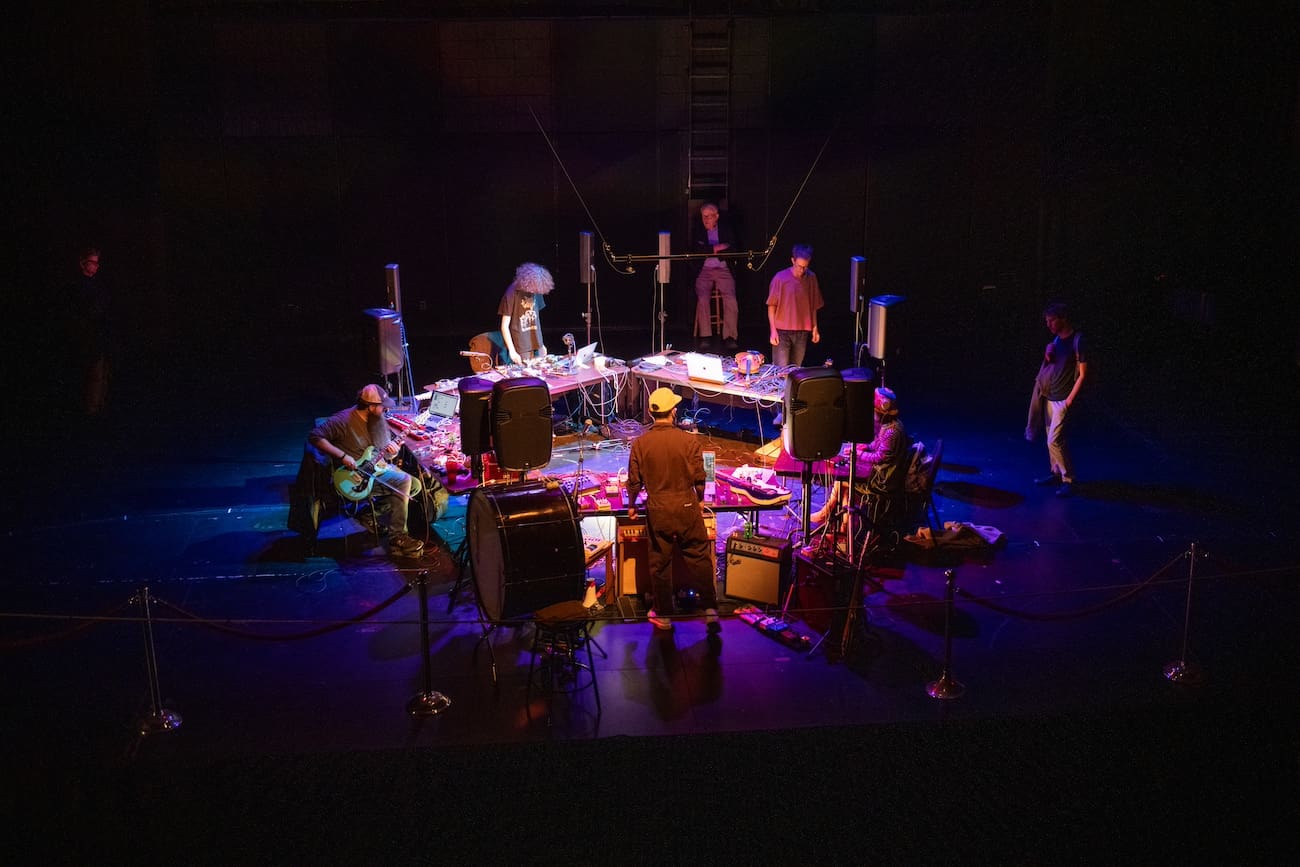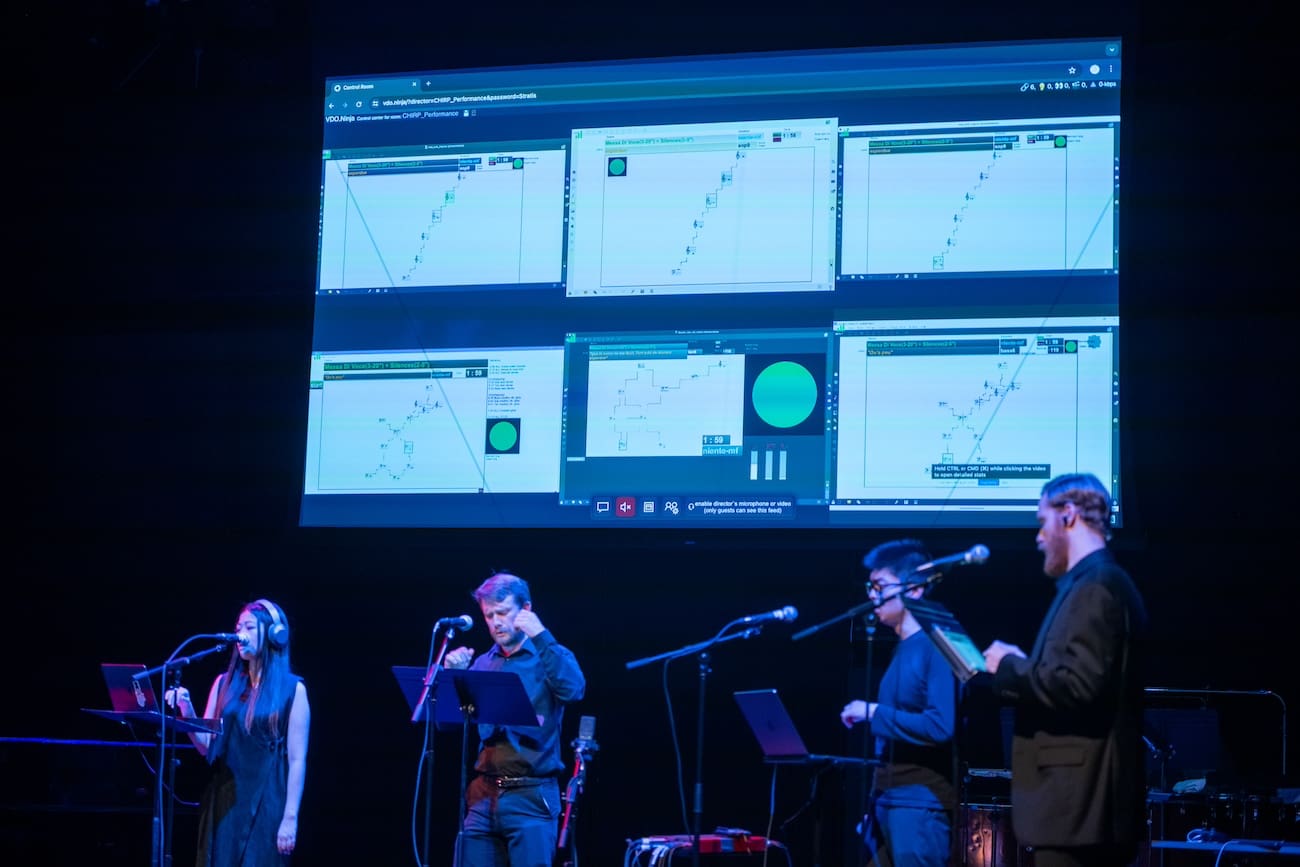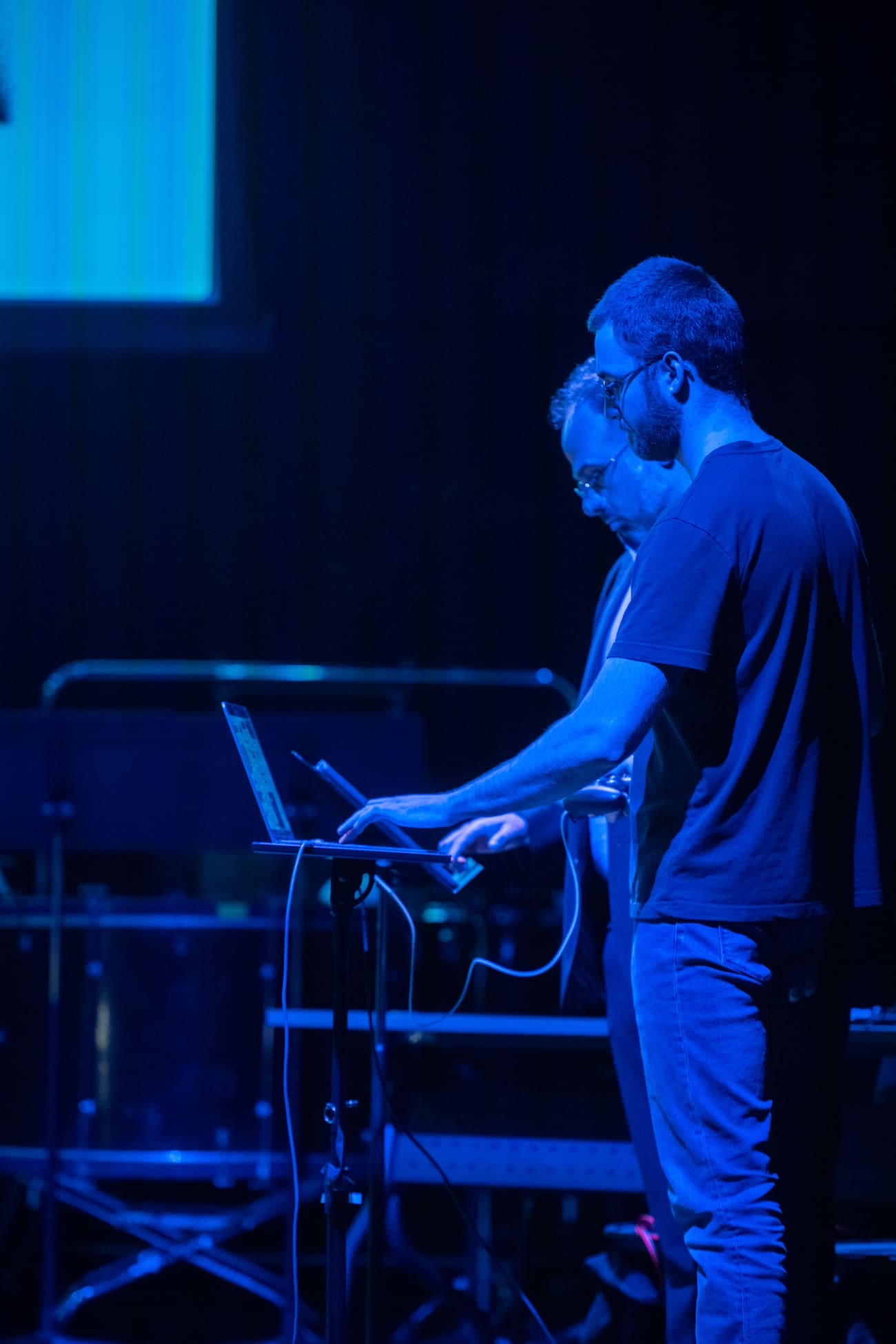This month, NEC students and faculty electrified the Plimpton Shattuck Black Box Theatre during Chirp, a six-night concert series featuring live electronic music and cutting-edge technology. Chirp concerts included multimedia compositions, acousmatic music, and computer-assisted pieces. The performances were led by faculty members Davide Ianni, Ted Reichman, Lautaro Mantilla, John Mallia, and Stratis Minakakis.
“NEC’s new Chirp series, a six-night showcase in the Black Box Theatre that featured 44 technology-based works by students, faculty, and alumni, demonstrated the sheer diversity of approaches to technology and high level of execution that exists within our innovative community,” said Mallia, composition faculty member and director of NEC’s Electronic Music Studio.
“The concert was a dazzling showcase of creativity and mastery,” said Ianni, who directed Night One of the Chirp showcase. “A vibrant community of talented composers and performers came together to deliver unforgettable performances. With an array of cutting-edge technological solutions, each piece resonated with innovation and creativity. Leading and instructing all the incredible artists was a true pleasure. These types of events are instrumental in building up a community within the Conservatory and solidifying its position at the forefront of 21st-century music making.”
Below is a selection of photographs from three of the six Chirp series concerts.
Night Three | DESMADRE
Night three of the Chirp series was titled “DESMADRE,” the Spanish word for chaos. Curated by Lautaro Mantilla, DESMADRE was an exploration of long-form experimentation with sound, electronics, groove, and dance music. It was a six-hour piece of all improvised music in a “come and go as you please” format.
“It was a profound and extremely challenging experience for us,” said Mantilla about DESMADRE. “The perception of time passing during our performance was deeply affected and blended by the musical material and the possibilities for interaction, the variety of sounds and textures, and the arch of the piece worked in our favor. There are many invaluable things we learned and found while performing the piece that will be fundamental for our personal and collective musical search, and we are all grateful and inspired by the experience.”



Night Four
John Mallia led Night Four of Chirp, which featured performances and diffusions of works involving real-time electronics and/or fixed media. Most of the pieces presented were created as part of NEC’s Electroacoustic Music and Composing for Film and Multimedia courses.
“I couldn’t be happier with the results and anticipate a rapid development of areas to be explored by students in the near future,” said Mallia.




Night Six
Curated by Stratis Minakakis, the final night of the Chirp showcase featured acoustic, electronic, and multimedia works in which the computer has been an integral collaborator in the compositional process. Through reimagining older music, mapping new paths in instrumental possibilities, prototyping interactive scores, navigating liminal auditory spaces, and creating new musical grammars in notated and improvised compositional practices, the program offered a fascinating survey of original computer-assisted music composed by NEC faculty, alumni, and current students.
“The concert showcased the wide range of computational creativity at NEC, combined with the highest standards of performance of challenging contemporary music,” said Minakakis. Interactive scores based on neural networks, audio-reactive video and video-reactive audio, cellular automata, and spectral analysis-driven orchestral textures composed a ritual of sonic experiences that left the audience mesmerized. It was particularly inspiring to see the high level of attendance, which included both members of the NEC family and music lovers of the wider Boston community.”













